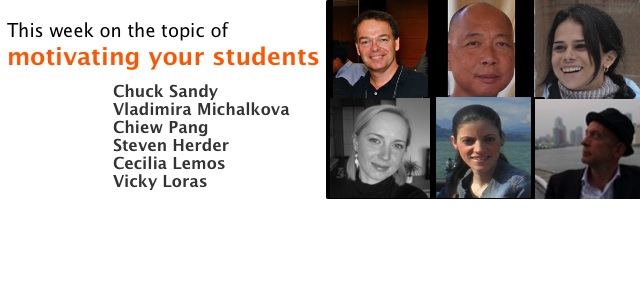Motivated Students Motivating Teachers
The more I think about it the more I think that motivation is a sort of Holy Grail everyone is looking for even though nobody is sure what it looks like or where to find it. It is a miraculous ingredient that solves every problem and misunderstanding. Whatever you do in your life, you surely know that motivation is this something that’s hard to grasp and hold yet fills your whole mind and body with light when it is there.
Honestly, I could usually say that I am Miss Motivation herself, so it is very surprising that when the time has come for me to write about it, I have found myself going through days filled with the utter lack of it. It is not tragic, nor disastrous, and in a few days I will surely come to understand that this actually had been the best time to write about it. However, all I can offer you now are three things I have on my mind on how to get out of this state.
First, I have realized that the personal life of a teacher is more important than I’ve ever thought. Second, I have learned that teaching and life in the classroom is a symbiosis to which everyone brings something to help the others thrive. Third, I have learned how to accept the gifts my students have and want to offer.
I have been lucky enough to have wonderful students this year, and I like to believe they can motivate me now as I have been doing for them all year long. I don’t need to share my problems or express my moods when I am with them. Students respond from within the atmosphere a teacher builds for them by responding in a similar way to what they are surrounded by. They don’t have to tell me “I had a bad day”. I know.
These days, I feel empty-handed when entering the classroom – no ideas, no enthusiasm, and no great solutions. Yet, I always come to my students with love, understanding and trust. I trust in their power to motivate me. I guess it will take me a few days to get over this, but I can tell you now: they are doing it. They come closer, share more about themselves and tell me what a good teacher I am. Did I build that in them? Yes, I’d like to believe that I did.
Well, just forget everything you’ve learnt or have been trying to learn. Go and treat yourself. For the first time in a long time, I am reading a book not at all related to teaching. I notice the world around me – the clouds, the flowers and the little bugs. I try to concentrate on what is here and now. I do what I have advised my students so many times. I do all of that because I think that whatever it is that took my motivation away will vanish sooner or later. Until then, there is no use spending too much energy, time and thought on pondering over it and sinking even deeper into the lack of it. Could it be time to recharge, time to walk off the worn paths that lead nowhere anymore, time to re-evaluate my priorities again? Yes, I’d like to believe it.
I stepped out of that way a bit today by taking an uneasy and kind of silent step. Hoping no one would notice and at the same time hoping for a spark, I reached out and revealed what I am going through to my friends on Facebook. I got a tight hug back from them. Is this how we motivate ourselves? Without a perfect theory, do we appreciate the leap of faith others take as we reach out to them with a helping hand?
Yes, I’d like to believe it.













